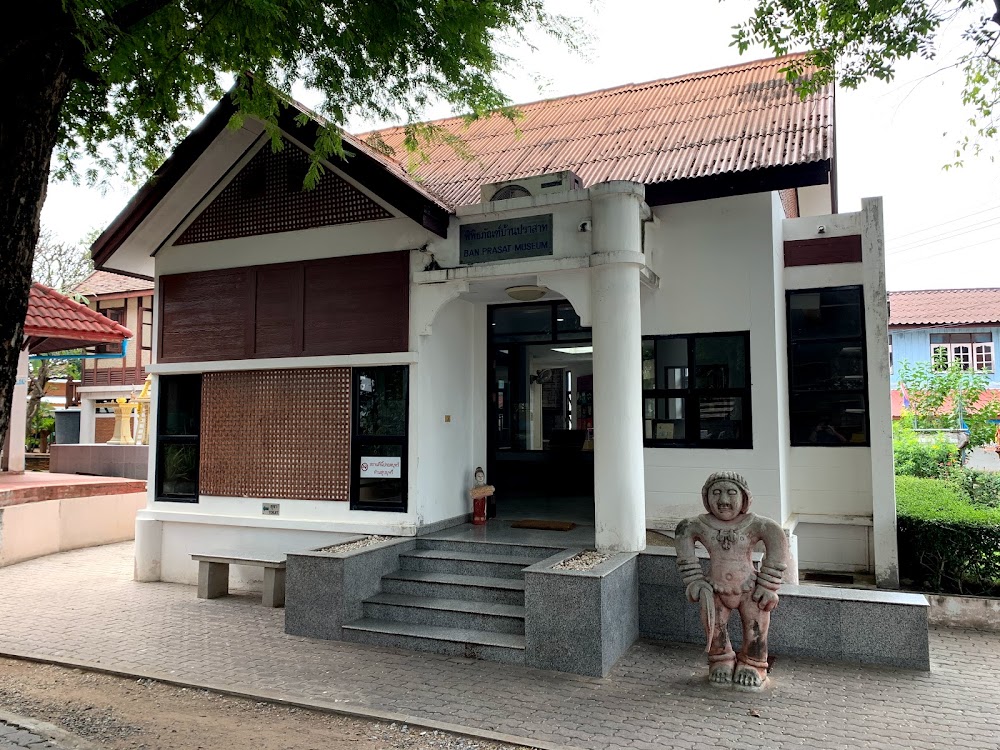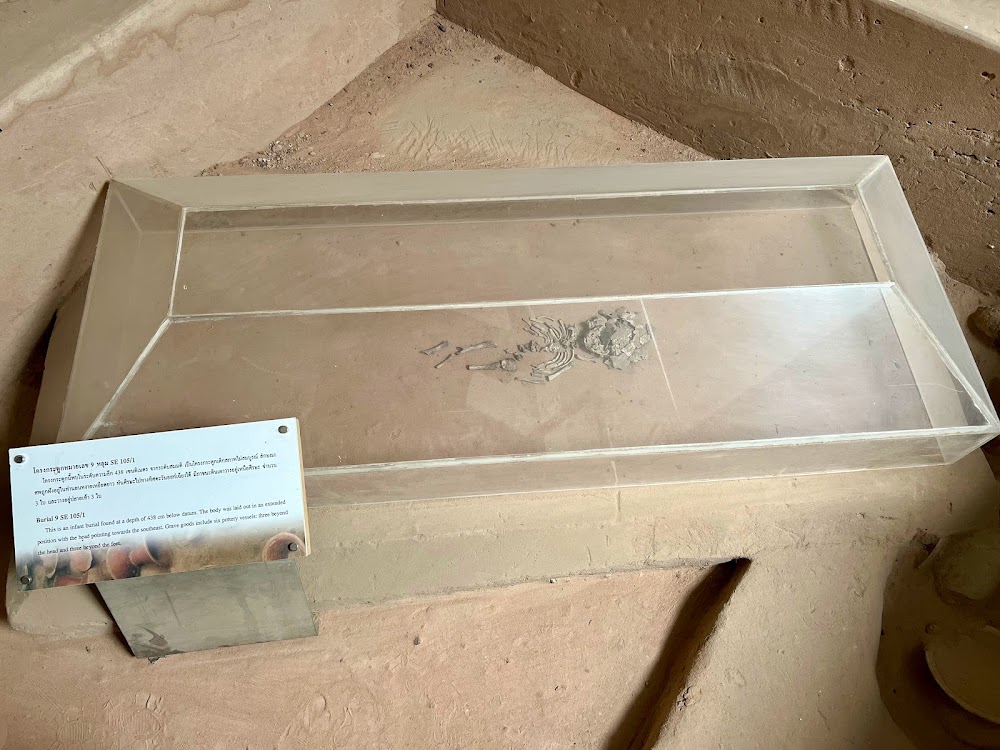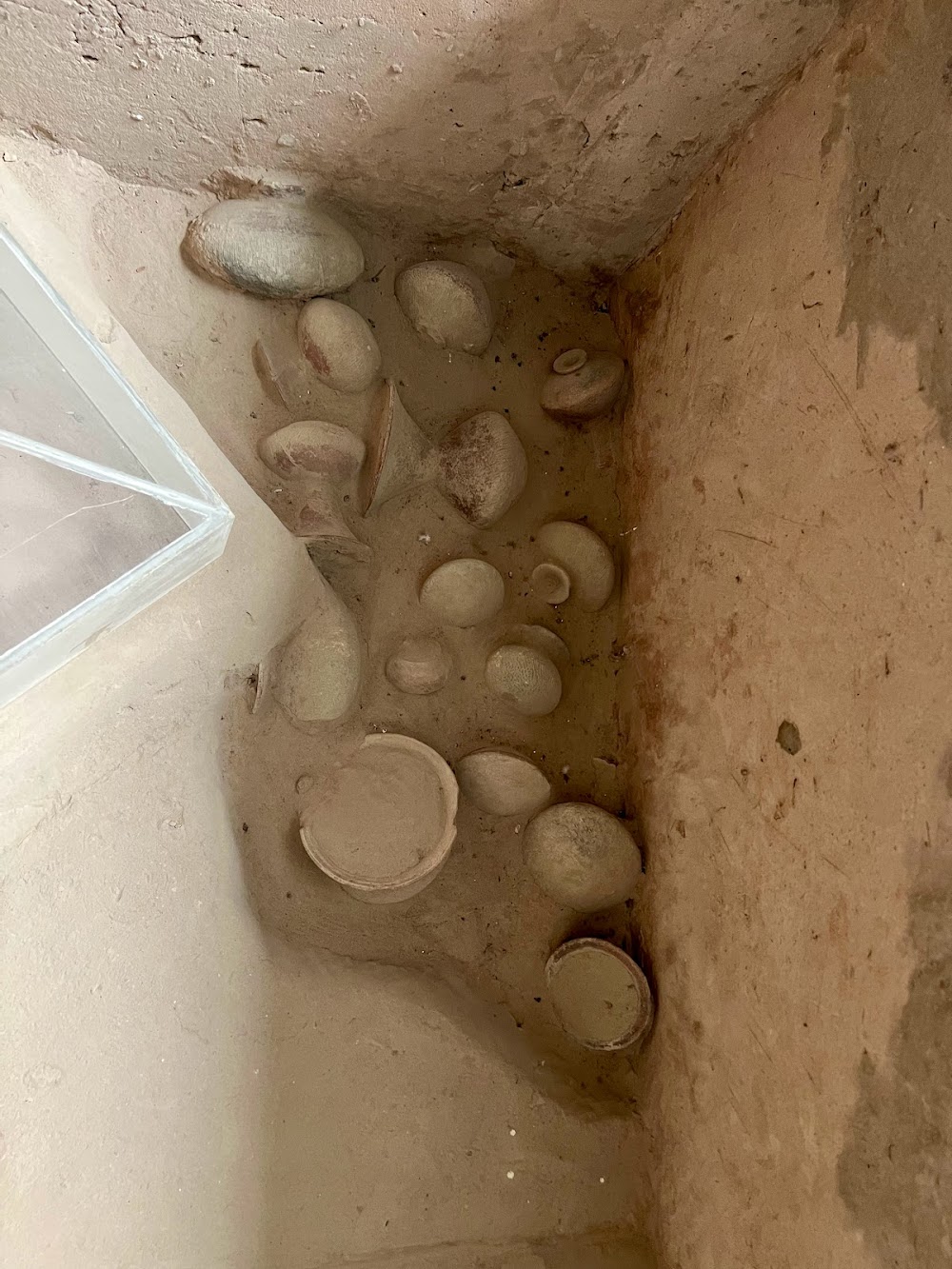Experience the rich history and cultural significance of Ban Prasat Archaeological Site, located in Wat Ban Prasat, Moo 7, Thailand. This remarkable site showcases ancient artifacts and structures that reflect the region’s storied past, allowing visitors to immerse themselves in the fascinating world of archaeological exploration.












Nestled in Wat Ban Prasat, Moo 7, Thailand, the Ban Prasat Archaeological Site stands as a testament to the remarkable history and cultural heritage of the region. This significant site features myriad ancient artifacts, making it a vital location for researchers and history enthusiasts alike. Visitors will find themselves captivated by the intricacies of the preserved structures and the array of findings that reveal the daily lives of past civilizations. The site provides an unparalleled opportunity to engage with the archaeological narrative of Thailand, highlighting the area’s importance as a center of trade and cultural exchange throughout history. Touring the site not only fosters appreciation for the skill and craftsmanship of ancient peoples but also inspires a deeper understanding of the historical context that shaped modern Thailand. With its serene surroundings and storied past, Ban Prasat is a must-visit destination for those seeking to uncover the layers of history embedded in the land. Immerse yourself in this archaeological wonder and discover the enduring legacy of Ban Prasat.
แหล่งโบราณคดีบ้านปราสาท (โนนสูง, ไทย) - รีวิว - ThailandAgoda.com
Ban Prasat Archaeological Site is perched on a picturesque hilltop overlooking Wat Ban Prasat, Moo 7, Thailand
While visiting some Thai friends in Nakhon Ratchasima Province, they wanted to take me out of their village and get a chance to look at ancient Thai history. They were very proud that in the village of Than Prasat, in the Non Sung District (see photo) of Nakhon Ratchasima Province (see photo) is Thailand’s second archaeological site (they only have two). The Archaeological Site was created in 1977 when the Thai Division of Archaeology began excavations at three sites in an ancient village that was about 700 by 450 meters in size and surrounded by a moat and a protective mound of dirt. Archaeologists believed that this village began about 3000 years ago and had been constantly occupied until modern times. After the archaeological excavations were completed, they set the site up as an outdoor museum that is free to the public and open from 8:30 AM until 4:30 PM. The excavations showed evidence of cultural development and included many artifacts of weapons and tools (going from stone, bronze, up to modern metals), pottery pieces (going from the most simple clay pots to increased decorations and eventually color glazed kiln fired pottery), woven bamboo (fans and pots), and ornaments (going from animal bones, pottery, and eventually to gold bracelets) as well as numerous human skeletons that gave DNA evidence for population tracking. To get there, you take Highway # 2 North from Nakhon Ratchasima for about 44 or 45 Kilometers and on the left will be Prasat Road with a large brick archway sign (see my photo) that clearly states in Thai and English “Archaeological Site Ban Prasat” with a huge clay urn on top. You take Prasat Road about 1 – 2 more Kilometers and then you will see the metal archway sign at the entrance to the village (see my photo). Just past the metal archway is an Information Center (see my photo) that also has a map of the area. Next to the Information Center is a small museum (see my photo) which displays some of the artifacts taken from the excavations. This is a great place to visit for an hour or two, especially if you are planning to visit Wat (Temple) Ban Prasat. The village also has the “Ban Prasat Home Stay” which is where villagers put up visitors in their homes and show them daily activities like basketry and farming. Reservations should be made at least a day in advance.
Ban Prasat is not the easiest place to get to. We ground out the 32k round trip from Phi Mai on bicycle, but naturally less masochistic travelers can hop off the Khorat-Phimai bus and walk in or go by motorbike. The site is compact and unspectacular, but still of interest. The baby skeleton blew me away. What really got me was the warmth and friendliness of the villagers and the beauty and tranquility of their home. Many offer homestays with prominent signs and this would be an excellent opportunity to sink into real Thai village life for a pittance. You are not likely to see another tourist.
This is a fascinating site. You need to know what you’re seeing, not just walk around and read the signs.On weekends, there are school children doing fund raising for their school who will act as guides, but they do not necessarily speak anything but Thai. So, your best option,if youare not on a tour is to pre study.You will see the actual digs with the findings shownas found.
I think it’s really worth the visit, in part because the local villagers have recognized the advantages of opening up their village to outsiders in a way that is very different from the usual tourist, souvenir-selling sites. They have opened up their homes as home-stays, and they have done it with charm and warmth. At the same time, right next to some of the individual houses, are open excavations of grave sites that date from the first millennium BCE. There’s a small, very simple museum that has examples of some of the pottery (which to my mind is the most beautiful of all the marvellous prehistoric pottery made in Thailand). It’s freely open to everyone, including the stray dogs, so it’s well worth leaving a contribution in the collecting box.
It was very cool looking at the archaeological site. They even have information written in English. The people who live in the area are also very friendly and even showed us about how they dry out the rice after they have harvested it.
We stopped off here on the way to Phimai. It is a very interesting place. The 3 main burial sites have signs in English but most of the information we read from our Lonely Planet. Worth a stop if you are passing by.
Visited on the way to Phi Mai. The site consisted to several excavation pits and a small museum. The infirmary was in thai and English. There were no entry fees but donations are welcome. The pits consist remains found at carious depths reflecting the settlement history of the area and the changing in burial customs over time. There are a number of home stays in the area. Well worth a couple of hours.
We stopped there on our way to Phimai. It was actually quite boring. The exhibits were dry and dusty and were poorly-curated. Not worth a special trip.
The archaeological site of Ban Prasat is the second open-air museum after the founding of Ban Chiang. The evidence of Dvaravati and the ancient Khmer cultural groups between 1,500 and 3,000 years ago assumed that there were communities in this area from prehistoric times to history. At this archaeological site, the three holes dug are available to visitors interested in ancient history.Excavation hole 1In each layer of soil, there are skeletons buried by different burial features in each era. Skeletons buried in the lowest layer 5.5 meters deep facing southeast, is in 3,000 epoch. In the 2,000s, the south-facing burial was different from that of the 3,000s. However, the resemblance is to bury the dead together and their decorations such as shell bracelets, beads, bronze rings, bronze bracelets, bronze and terracotta head decorations. The pottery was of enamelled red clay with a striped rope pattern, a narrow neck with a wide mouth, some are as tall as a pitcher, others are spherical and short. The appearance of terracotta changed to phimai black in the 1500s era. They were black, shiny, rough and thin.Excavation hole 2There is evidence related to religious places in the Buddhist centuries of the 13th-16th centuries, known as “Ku Tan Prasat”, and head parts of Buddha images characterized in local Dvaravati art. In addition, a statue of a woman with a half-bust holding her belly as if she were pregnant, and strips of stucco decorating the castle.Excavation hole 3At a depth of 5.5 meters, there are skeletons of headless women buried along with smashed vases. Archaeologists have speculated that there was an execution on those women. There were a lot of head bones collected 500 meters from that point. The villagers of Ban Prasat will unite to dedicate merits to these women on April 21 of each year.